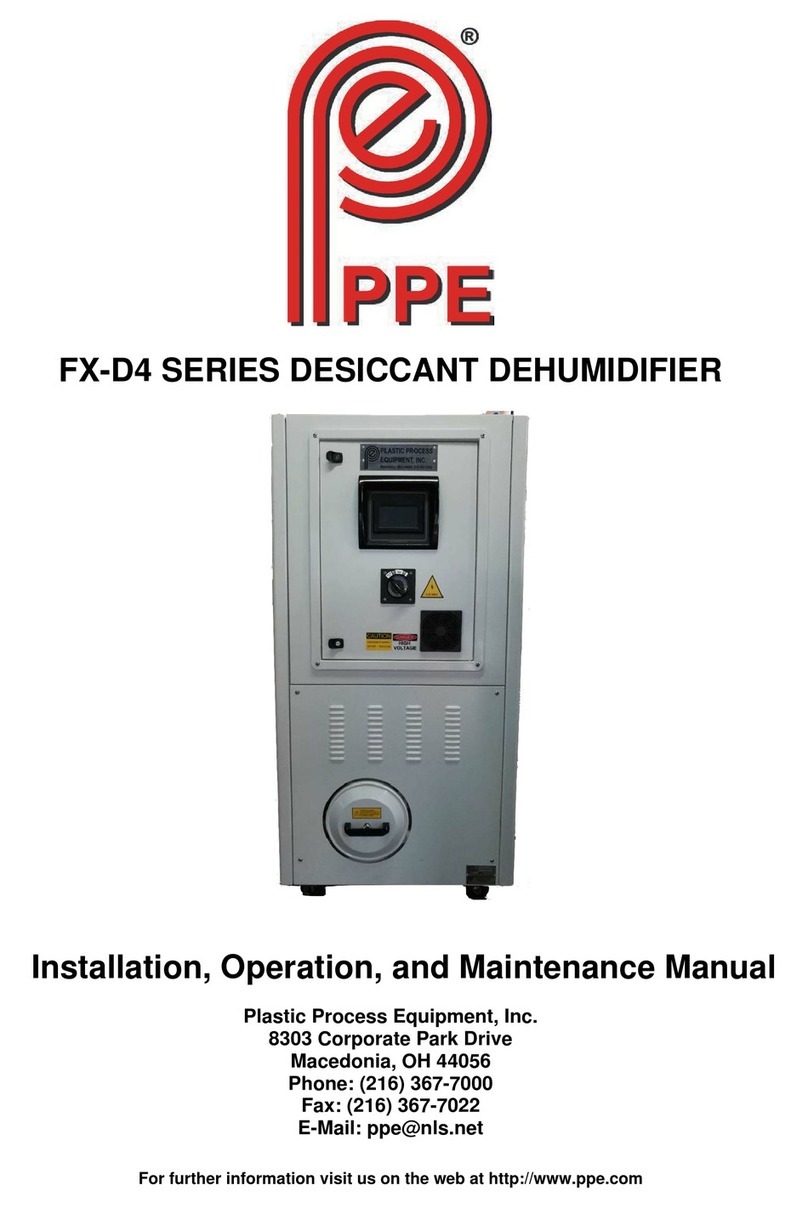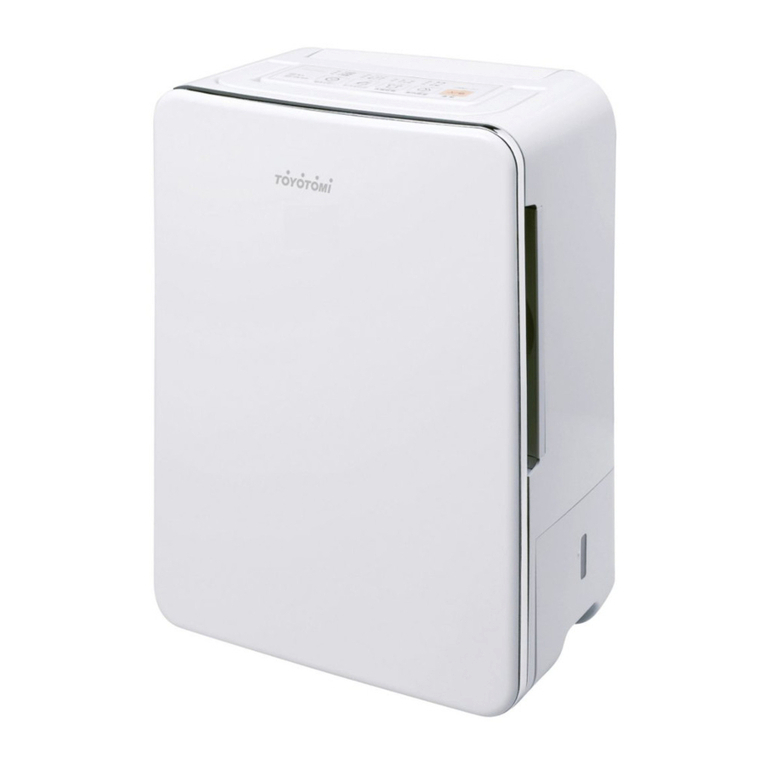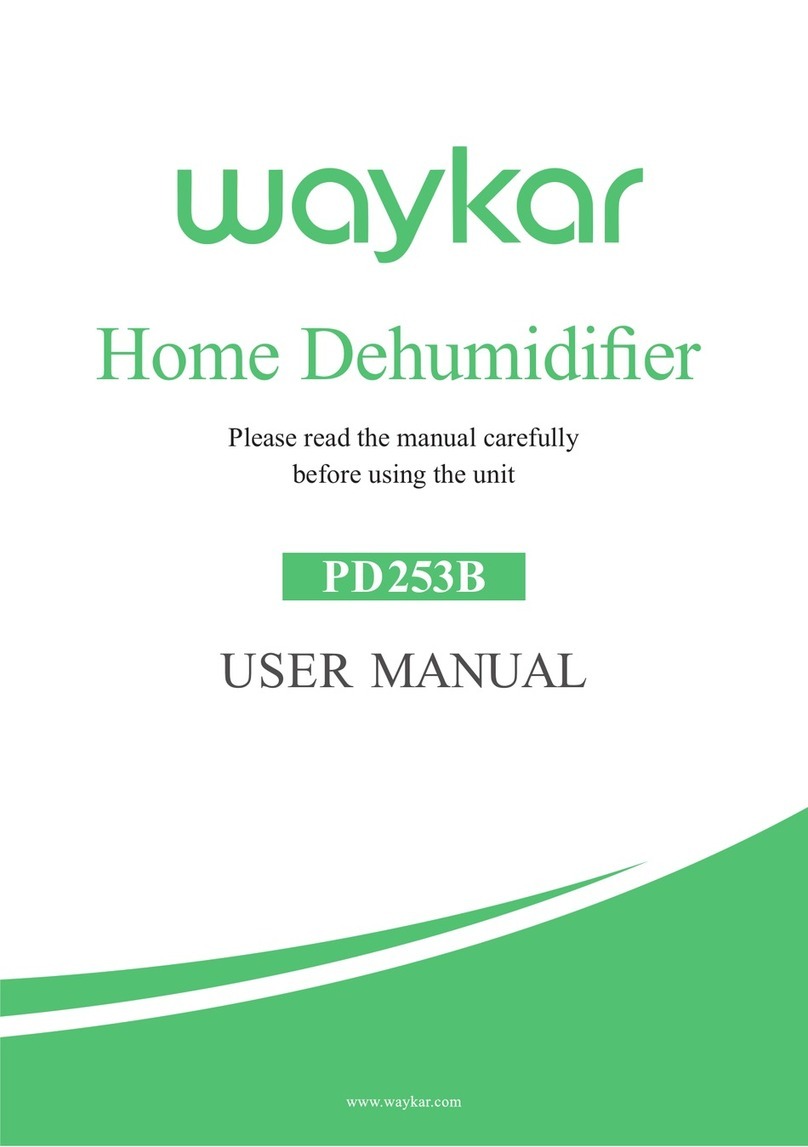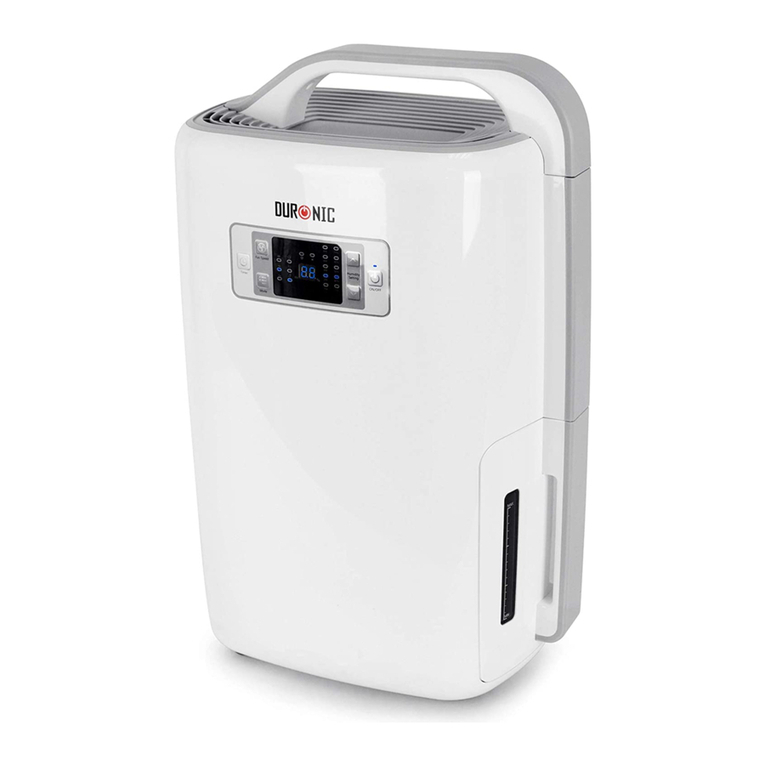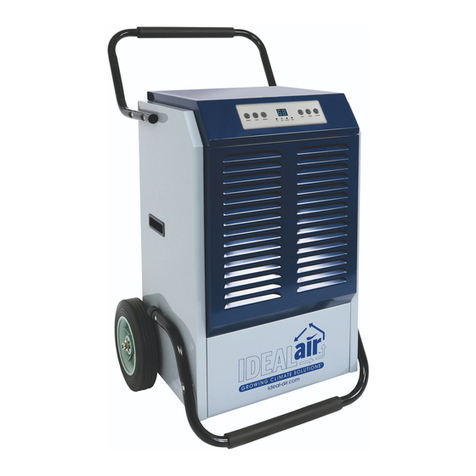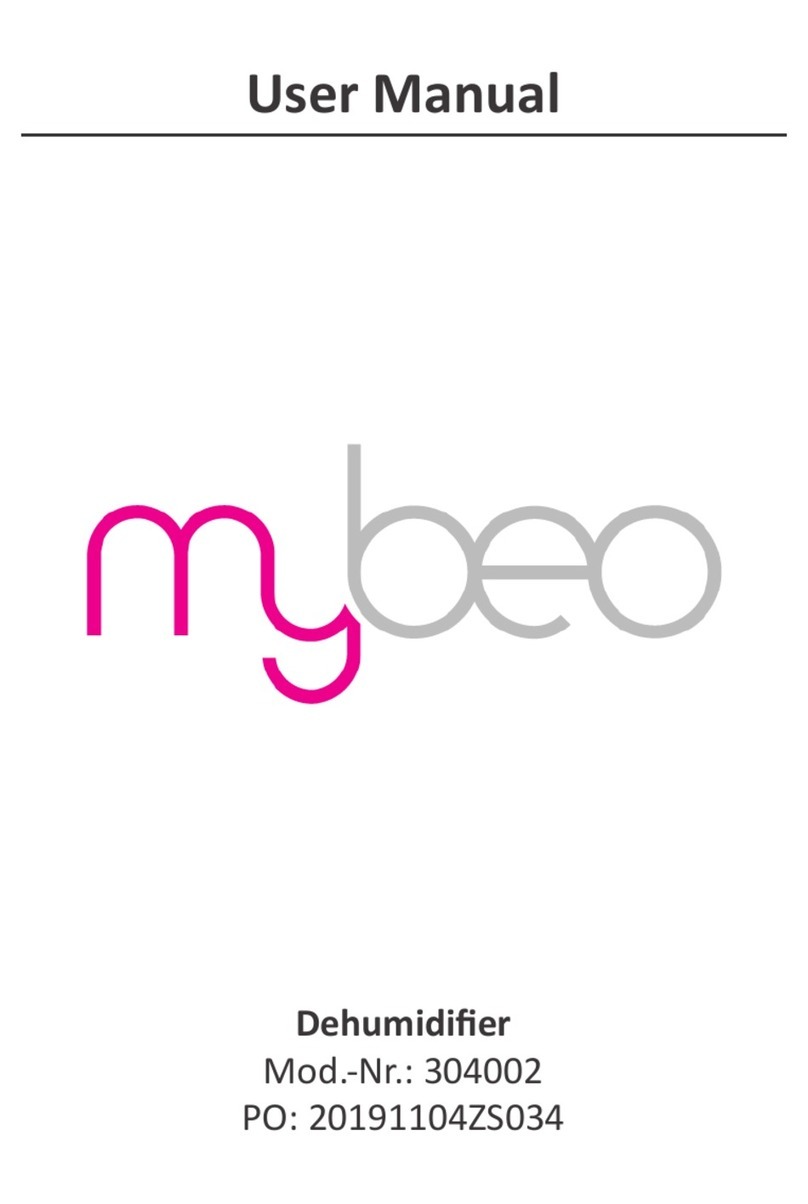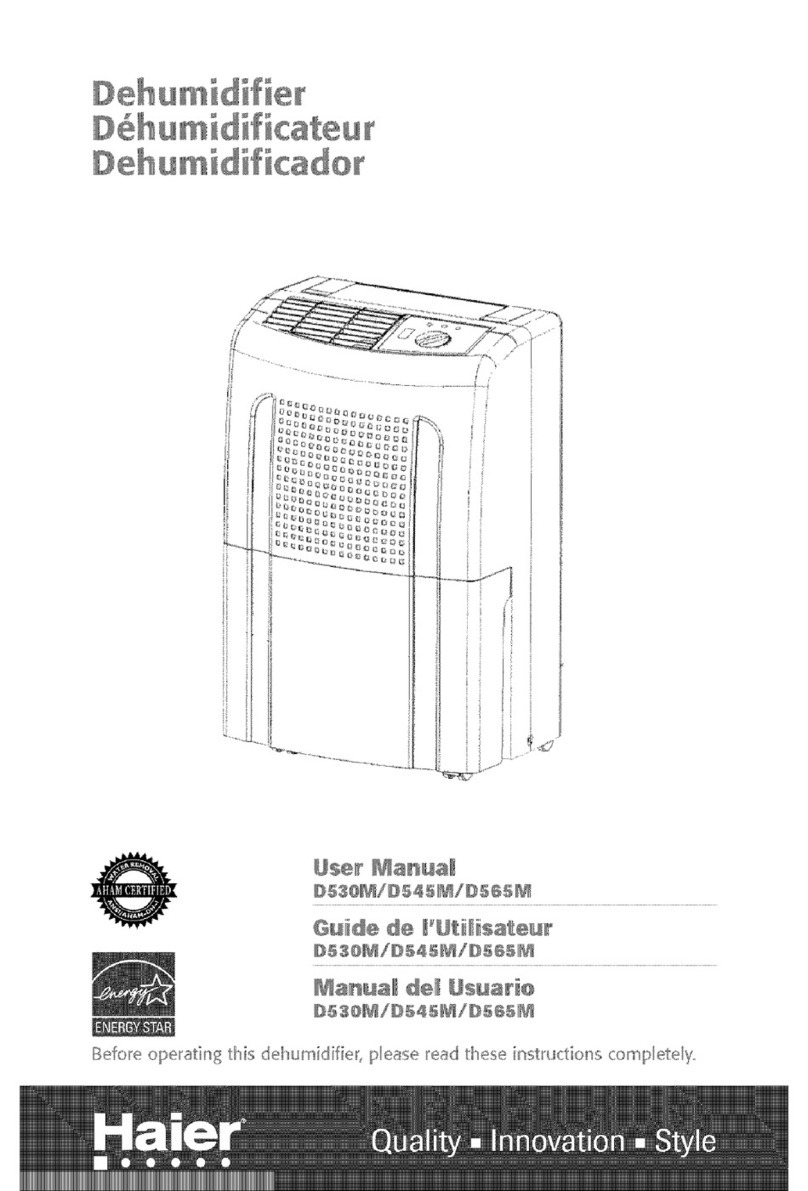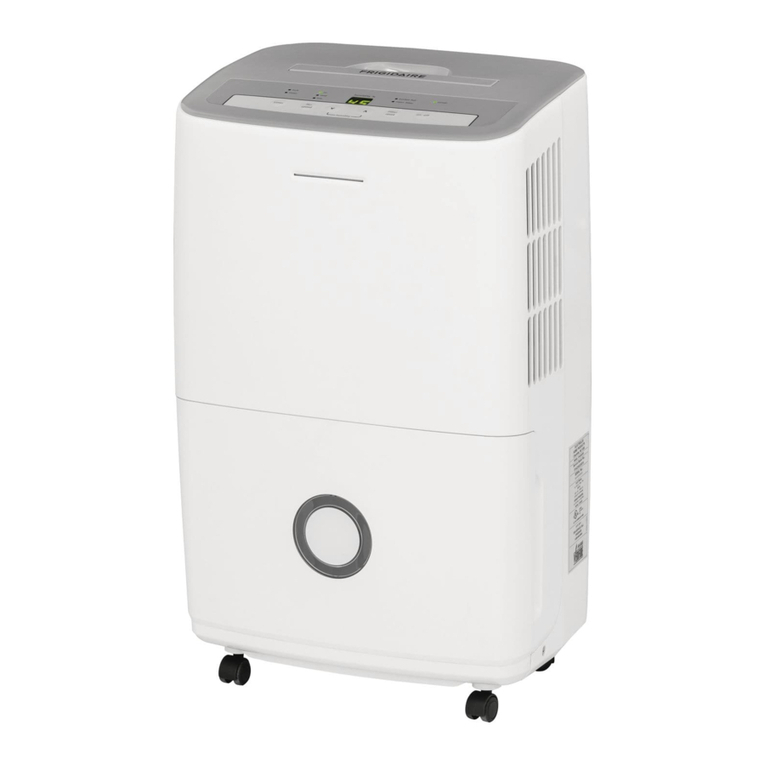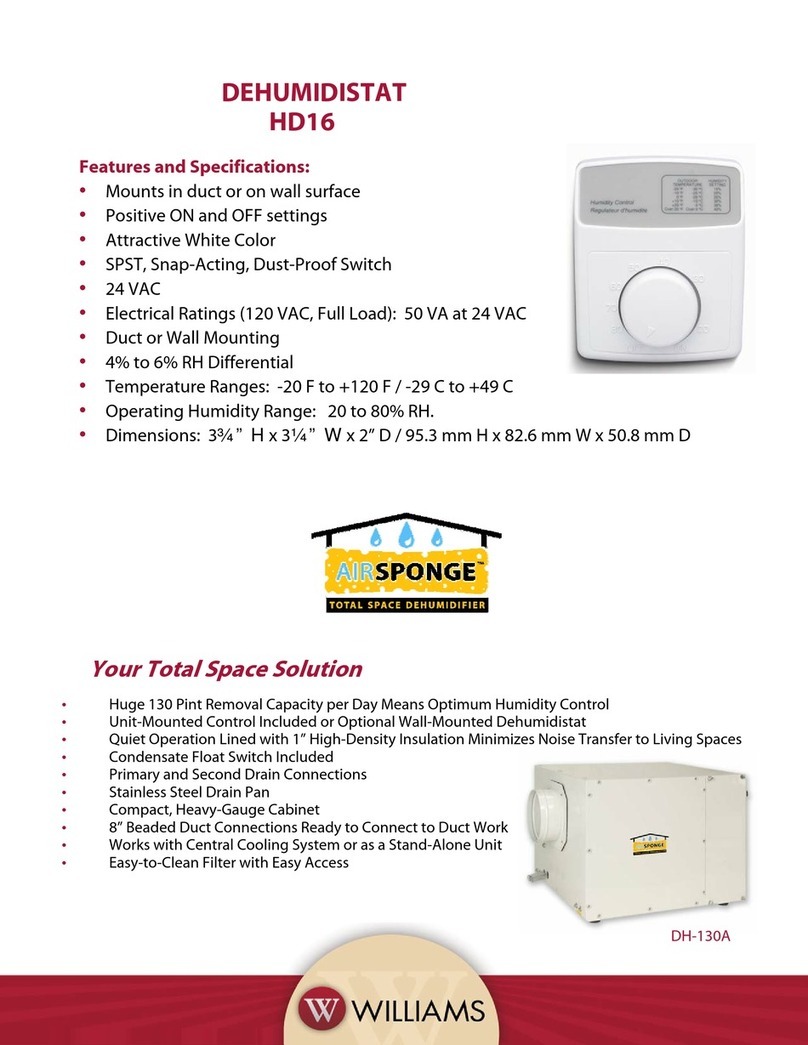PPE FX-D4 Series User manual

FX-D4 SERIES DESICCANT DEHUMIDIFIER
Installation, Operation, and Maintenance Manual
Plastic Process Equipment, Inc.
8303 Corporate Park Drive
Macedonia, OH 44056
Phone: (216) 367-7000
Fax: (216) 367-7022
For further information visit us on the web at http://www.ppe.com


Table of Contents
1INTRODUCTION
1‐1 FXSERIESDESICCANTDEHUMIDIFIERINTRODUCTION ..................................................... 4
1‐2PRINCIPLESOFOPERATION................................................................................................ 4
1‐3FX‐D4SERIESDESICCANTDEHUMIDIFIERSPECIFICATION ................................................. 5
1‐4FRONTPANELCONTROLS................................................................................................... 6
2INSTALLATION
2‐1INSPECTIONUPONRECEIPT ............................................................................................... 8
2‐2PLACINGTHEEQUIPMENT ................................................................................................. 8
2‐3ELECTRICALCONNECTIONS ................................................................................................ 8
2‐4DUCTWORKCONNECTIONS .............................................................................................. 9
2‐5WATERCONNECTIONS ....................................................................................................... 9
3OPERATION
3‐1INITIALSTARTUP .............................................................................................................. 11
3‐2VERIFYINGFANROTATION ............................................................................................... 11
3‐3SETTHEPROCESSOULETTEMPERATURE......................................................................... 13
3‐4REGENERATIONTEMPERATURE....................................................................................... 13
3‐5DESICCANTROTORROTATION ......................................................................................... 13
3‐6THERMALPROBE.............................................................................................................. 14
3‐7HMI+PCBSETUPANDOPERATION ................................................................................... 14
4MAINTENANCE
4‐1DESICCANTROTOR ........................................................................................................... 20
4‐2DESICCANTROTORSEALS................................................................................................. 21
4‐3DESICCANTROTORSHELL................................................................................................. 22
4‐4DESICCANTROTORDRIVEMOTOR................................................................................... 22
4‐5FILTERS ............................................................................................................................. 22
4‐6MAINTENANCERECORDFORM........................................................................................ 24
5TROUBLESHOOTING
5‐1TROUBLESHOOTINGINDEX .............................................................................................. 25
6TECHNICALINFORMATION
6‐1WIRING,MODEL:FX‐50/100/180(230V/3¢/60HZ)........................................................ 26
6‐2WIRING,MODEL:FX‐100/180/300/400(460V/3¢/60HZ) .............................................. 30
6‐3EXPLOSIONVIEW(FXSERIES) ........................................................................................... 35

1
INTRODUCTION
1-1 FX SERIES DESICCANT DEHUMIDIFIER INTRODUCTION
Congratulations on your purchase of the PPE FX Series Desiccant Dehumidifier from Plastic Process
Equipment, Inc. The FX Series Desiccant Dehumidifier offers the finest in resin drying technology,
however, this machine can only provide maximum service if properly installed, operated, and maintained.
This manual is provided to familiarize you with the dehumidifier.Instructions are provided to install,
operate and maintain your dehumidifier. Ultimate satisfaction depends on the quality of installation and a
thorough understanding of the equipment. The FX Series Desiccant Dehumidifier is built around tested
engineering principles and has passed a thorough inspection for quality of workmanship and function.
There are many models in the FX Series Desiccant Dehumidifier line, some differences may exist between
the pictures in this manual and your specific dehumidifier.
1-2 PRINCIPLES OF OPERATION
The functionof the FX Series Desiccant Dehumidifier is to continuously remove vapor state moisture
from an air stream. This is accomplished by using a rotating desiccant media and three separate air
streams. Figure 1-1 illustrates the three air streams.
The first air stream passes the moisture laden air from the drying hopper through the desiccant media. After
processed air has been exposed to the desiccant media, the air is returned to the drying hopper. As the
desiccant media adsorbs moisture from the process stream, it is rotated out of the process stream into the
reactivation stream. This second air stream is heated to drive moisture out of the desiccant media, and
prepare it for more adsorption. The desiccant media then rotates out of the reactivation air stream into the
purge air stream. The purge stream consists of a small portion of the process outlet air that cools the
desiccant media. Once cooled, the desiccant media rotates back into the process stream to begin adsorption
again. This cycle is done on a continuous basis, providing a constant drying process. The FX Series
Desiccant Dehumidifiers are designed with the process and reactivation air streams flowing in opposite
directions. This counter flow design maximizes the energy efficiency of the equipment.

5
Figure 1-1. Air streams
1-3 FX-D4 SERIES DESICCANT DEHUMIDIFIER SPECIFICATION
MODEL NO. FX-050 FX-100 FX-180 FX-300 FX-400
Air Flow CMH 50 100 180 300 400
Dewpoint °C -40° -40° -40° -40° -40°
Drying Blower KW 0.4 0.75 2.2 3.4 5.5
Drying Heater KW 4 6 12 15 18
Regen. Blower KW 0.18 0.18 0.4 0.75 0.75
Regen. Heater KW 2.5 4 5 8.5 8.5
Processing Heater Honeycomb Rotor
Process inlet inch 2 2.5 2.5 3 3
Process Outlet inch 2 2.5 2.5 3 3
Cooling Water Flow Ltr/min 5 15 30 40 50
Water Connect inch 3/4 1 1 1 1
Power Supply 3Ø,220~460VAC,50/60Hz
Total Power KW 7.08 10.93 19.6 27.65 30
DIMENSIONS
L mm 770 910 910 1045 1045
W mm 680 880 880 930 930
H mm 1280 1630 1630 1930 1930

6
1-4 FRONT PANEL CONTROLS
The front panel of the FX Series Dehumidifier contains all controls and indicators necessary for
dehumidifier operation. For a description of the controls and indications, refer to Figure 1-2 and the
following list:
1. Power On indicator – This black switch turned to “on” when power has been supplied to the
dehumidifier. This does not indicate that the unit is turned on. This only indicates that power is
available to the dehumidifier.
2. System On indicator – This panel screen light illuminates when the Power switch is in the ON
position. This indicates that the unit is turned on.
3. Faults indicator – This panel screen showed red light illuminates on “STATUS” when the bed failure
alarm occurs, or a failure of motor protection circuit breaker. A bed failure alarm will occur if the
desiccant rotor does not rotate at least once every ten minutes.
4. Audible Alarm – The audible alarm will sound to indicate a fault on “STATUS”.
5. Dew point Display – This indicator displays the current process outlet dew point.
NOTE
Dew point Set point is for reference only; dew pointer is strictly display, not control.
6. Process Temperature (Dry temp) – This indicator/controller displays the temperature selected by the
Temperature Indication selector, and controls the process outlet temperature. The PV of the display
shows the currently selected process variable. The SV of the display shows the process outlet
temperature set point. For flexible tubing and water flow requirements see chart below:

7
7. Regeneration Temperature (Desiccant temp)– This selector controls the temperature displayed on
the Temperature Controller. The PV of the display shows the currently selected process
variable. The SV of the display shows the process outlet temperature set point. (Default value
180 °C /356 °F)
8. Power switch – This switch controls power to the dehumidifier.
Figure 1-2. Front Panel Controls and Indicators

8
2
INSTALLATION
2-1 INSPECTION UPON RECEIPT
Thoroughly inspect the dehumidifier to ensure no damage has occurred during shipping. Inspect both the
inside and outside of the dehumidifier. If any damage is found, a claim should be filed with the shipping
company immediately. Please notify Plastic Process Equipment immediately so we may provide whatever
assistance we can.
Check dehumidifier external surfaces for damage.
Ensure the desiccant rotor is tightly secured in place.
Ensure the drive chain is in good contact with the desiccant rotor, tensioner arm, and drive
pulley.
Ensure the top and bottom desiccant rotor seals are in good contact with the desiccant rotor.
Check all electrical connections to ensure they are tight.
2-2 PLACING THE EQUIPMENT
The dehumidifier should be carefully located and set in place on a level surface. If mounting the
dehumidifier on a machine or stand, the dehumidifier must be adequately supported. At a minimum,
support is required below the caster mounting plates. Dehumidifier maintenance and service will require
access to all sides of the dehumidifier. If the unit is machine or stand mounted, leave enough room on all
sides to open all dehumidifier access doors.
2-3 ELECTRICAL CONNECTIONS
Ensure the supply power requirements are in accordance with the dehumidifier
nameplate data. Serious damage to the dehumidifier motor and control systems
can occur if incorrect power is supplied to the dehumidifier.
Install electrical connections in accordance with all applicable federal, state, and local regulations. Good
electrical practices should be followed to achieve the best installation possible. Refer to the electrical
schematic provided with this manual before installing any electrical connections. If a disconnect switch is
not furnished with your dehumidifier, one should be installed adjacent to the dehumidifier for safety and

9
ease of servicing. Electrical wiring to the equipment must be adequately sized for the minimum amperage
shown on the unit nameplate.
2-4 DUCTWORK CONNECTIONS
NOTE
All supply and return air ductwork and hose connections for the dehumidifier must
be air and vapor tight. Failure to achieve air and vapor tight connections may
impactdehumidifierperformance.
The most common type of ductwork used with resin drying equipment is flexible hose that is both
temperature and moisture resistant. Moisture resistance is extremely important for proper dehumidifier
performance. Even though the dehumidifier is removing moisture from the hopper return air, the air will
not be dry when it reaches the process if moisture enters the dry supply air stream through leaks in the
ductwork. Air ducts must be properly sized to keep pressure losses at a minimum. Pressure loss must not
exceed the designed static capacity. Connect the process inlet and process outlet hoses to the appropriate
connections on the back of the dehumidifier cabinet. Refer to Figure 2-1 for hose connection
locations.
Figure 2-1. Hose Connections
2-5 WATER CONNECTIONS
Water should be supplied to the unit if maximum performance is required. Your application may not
require the use of the cooling coil for desired performance, so we suggest running the unit without water
connected to test performance. Generally speaking, higher process temperatures usually require use of the
cooling coil.
Connections ports for the inlet air-cooling coil are located on the rear of the dehumidifier assembly with the
air inlet and outlet connections. When facing the rear of the dehumidifier the connections are located in the
lower left hand corner of the rear panel. The connections are barb-type for use with flexible tubing. The
tubing must be attached to the barb fittings with hose clamps to prevent leakage. Water must be supplied to

10
the unit for optimum performance, water temperature required: 40 to 80 degrees F, for flexible tubing and
water flow requirements see chart below:
Model Flexible tubing diameter Iced water capacity Iced water flow LPM/GPM
FX-50 3/4” 1500Kcal/H/10℃/50°F 10/2.6
FX-100 1” 3000Kcal/H/10℃/50°F 20/5.2
FX-180 1” 6000Kcal/H/10℃/50°F 30/7.8
FX-300 1” 9000Kcal/H/10℃/50°F 50/13
FX-400 1” 14000Kcal/H/10℃/50°F 60/16
FX-700 1” 27000Kcal/H/10℃/50°F 100/26
FX-1000 1” 42000Kcal/H/10℃/50°F 140/37
Water connections, rear of unit Water lines inside of unit

11
3
OPERATION
3-1 INITIAL STARTUP
After the dehumidifier has been installed it is ready for initial startup. The following items need to be
checked when energizing the dehumidifier for the first time:
Verify fan rotation direction per paragraph 3-2.
Set process outlet temperature per paragraph 3-3.
Set regeneration temperature per paragraph 3-3.
3-2 VERIFYING FAN ROTATION
FX Series Dehumidifiers are powered by 3-phase electrical circuits. With all types of power, it is possible
for the process & react fan motor to rotate in the wrong direction. On initial power up of the dehumidifier,
FAN ROTATION MUST BE CHECKED TO ENSURE PROPER DEHUMIDIFIER OPERATION.
ON SOME MODELS OF DEHUMIDIFIER, IT MAY BE POSSIBLE TO VIEWTHE ROTATION
OF THE PROCESS FAN MOTOR. ON THESE MODELS, ENSURE THAT THE MOTOR IS
TURNING IN THE DIRECTION INDICATED BY THE ARROW ON THE MOTOR. SEE
FIGURE 3-1.
Figure 3-1. Process Fan Motor

12
Figure 3-2. Process Filter Access Door
If the process fan motor rotation is not visible, open the process filter access door shown in Figure 3-2. If
the process fan is rotating in the proper direction, the dehumidifier should be sucking air in through the
filter. If air is blowing out the filter, then the process fan is rotating in the wrong direction.
If the react fan motor rotation is not visible, check that air is blowing out of the react exhaust on the top of
the cabinet.
If the fans are turning in the wrong direction, perform the following procedure to fix the rotation direction.
Lock out all power to the dehumidifier before servicing any electrical connections. High voltages are
present inside the control cabinet. Failure to lock out power may result in serious injury or death.
1. Turn off the dehumidifier and lock out power at the disconnect switch.
2. Reverse any two of the three main power leads at the electrical disconnect.
3. After making changes to the electrical wiring, verify proper process fan rotation

13
3-3 SET THE PROCESS OULET TEMPERATURE
The process outlet temperature is set using the Temperature Controller on the front panel, shown in Figure
3-3 and is limited by the thermostat circuit board inside the cabinet. The top PROCESS TEMP of PV is
displaying indicates the currently selected temperature for dry air. The middle REGENERATION TEMP is
displaying always indicates the desiccant air. (Default value 180 °C /356 °F)
Figure 3-3. Temperature Controller
3-4 REGENERATION TEMPERATURE
The regeneration temperature is controlled by a thermostat circuit board, inside the cabinet. It is factory
preset and should not be adjusted. (Default value 180 °C /356 °F) Contact Plastic Process Equipment, Inc.
if there are issues with this setting.
3-5 DESICCANT ROTOR ROTATION
The desiccant rotor turns at a speed of approximately 100. The default value is 40 for FX- 50 to 300, and
50 for FX-400-1000. If the desiccant rotor does not complete a minimum of one revolution every 10
minutes, the Faults alarm will activate. This alarm illuminates the red Faults light on the control panel and
sounds an audible alarm.
Figure 3-4. Adjusting gadget for desiccant rotor speed
Current temp Setting temp
Default value Setting temp
Information area

14
3-6 THERMAL PROBE
The thermal probe can be connected with hopper dryer. For more information on the thermal probe, refer to
the manufacture’s documentation included with your hopper dryer.
Figure 3-5. Thermal probe for connecting hopper dryer
3-7 HMI+PCB SETUP AND OPERATION
1. Display area (℃)
Name Description Remarks
Display dry temp [100], meaning the real value is
100
Display regeneration temp [180], meaning the real value is
180

15
2. Start key area
Name Description Remarks
Power on/off Green color for on, red color for off
Setting parameter Access code for entry
Timer for on Blue color for on, red color for off
Mute function
3. Setting temperature area
Press , show digital keyboard
Item Name Description
Delete For fault enter
Leave Back to home page
Up Value going up
Down Value going down
Enter After setting parameter
Positive/Negative Value needs to adjust negative
4. Operation
Power switch on
Display area on status will show standby.
C
ode indication
Value

16
Press , fan motor, desiccant rotor entry running position.
Short after heater start running.
Press ,timer start, entry value.
In the alarm state, press , release audible alarm.
Press for setting parameter, need access code.
5. Setting parameter
In any state, press ,showsentry keyboard, input”22222”,then press , can be accessed
6. Buttons description
Parameter value
Name Function description Default Range unit
Management only
Setting power “on” automatically 720 0~5459 minute
Language selected 0 0: English
1: Chinese
Process temp high alarm PV>SV+[high value] 18 0~350
Regeneration temp high alarm PV>SV+[high value] 18 0~350
Temperature low alarm PV<SV-[low value] 180 0~350
Press 2 seconds, start PID
Display input state
Back to home page
Press after setting parameter, if want to leave this page, press

17
Press ,and input security code ”55555”, press entry page below
Parameter value
Name Press times Function description Default Range Unit
0 CH1 setpoint limit 302 0~350 ℃/℉
1 CH2 setpoint limit 392 0~350 ℃/℉
2 Remote OFF 0: OFF
1: ON
3 Heater delay 120 0~9999 sec
4 Motor shutdown delay 140 0~9999 sec
5 Motor shutdown method 1 0: stop as time
1: stop as temp. ℃/℉/sec
6 CH1 max input 338 0~350 ℃/℉
7 Energy shortage time 9999 0~9999 sec
8 Roller time 600 0~9999 sec
9 CH2 max. input 428 0~350 ℃/℉
10 Disable 3phase detect 0 0: OFF
1: ON
11 Digit filter 16 1~250
12 Unit 0 0:Celsius
1:Fahrenheit ℃/℉
** WARNING: Above parameters are for engineering, please don’t use it if not necessary.

18
0 Com add 1 0-250
1 Com bps 2 0-3 bps
2 Com interv. 0 0-100 ms
3 EEP ON ON: Save
OFF: Unsaved
0 CH1 P band 20.0 0~+999.9
1 CH1 Intgral 240 0~+9999
2 CH1 Derivate 60 0~+9999
3 CH1 C P band 1000 0~+999.9
4 CH1 Anti wind 100 0~+100
5 CH2 P band 20.0 0~+999.9
6 CH2 Intgral 240 0~+9999
7 CH2 Derivate 60 0~+9999
8 CH2 C P band 1000 0~+999.9
9 CH2 Anti wind 100 0~+100
10 CH1 Heat cycle 20.0 0~+360.0 sec
11 CH2 Heat cycle 20.0 0~+360.0 sec
0 CH1 Offset 0.0 -99.9~100.0
1 CH1 Gain 1000 0~1000
2 CH2 Offset 0.0 -99.9~100.0
3 CH2 Gain 1000 0~1000
4 CH3
Offset -51.0 -99.9~500.0

19
5 CH3 Gain 4300 -999~5000
Back to previous page
** WARNING: Above parameters are for engineering, please don’t use it if not necessary.

20
4
MAINTENANCE
4-1 DESICCANT ROTOR
The desiccant rotor supplied with the dehumidifier, Figure 4-1, will last indefinitely under ideal conditions.
However, by their very nature desiccants make good filters. The life of the desiccant is directly related to
the airborne contaminants passed through it. Airborne contaminants, exposure to acidic gases or air streams,
and contact with petroleum based airborne particles can reduce the efficiency of the desiccant rotor. Proper
filtration and preventing contact with chemicals will significantly improve the life of the desiccant.
ROTOR
FACE
ROTOR
BAND
BED FAILURE
PICKUP TAB
DRIVE
CLEAT
Figure4-1. DesiccantRotor
Do not place the desiccant rotor on its face. Serious damage can occur to the desiccant. Damage to the desiccant media may
cause improper operation and lack of dehumidifier performance. Always set the desiccant rotor on the metal rotor band.
Brace the rotor with blocks to prevent rolling.
The preferred method of cleaning the desiccant rotor is to blow dust out with compressed, oil free, air at
a maximum pressure of 20 psi. The desiccant media should then be reactivated by heating at 350ºF
maximum for 15 minutes. Washing the desiccant media is not recommended. Wash water impurities may
contaminate the desiccant. Inspect the face of the rotor to see that no surface damage has occurred.
Other manuals for FX-D4 Series
1
This manual suits for next models
7
Table of contents
Other PPE Dehumidifier manuals
Popular Dehumidifier manuals by other brands
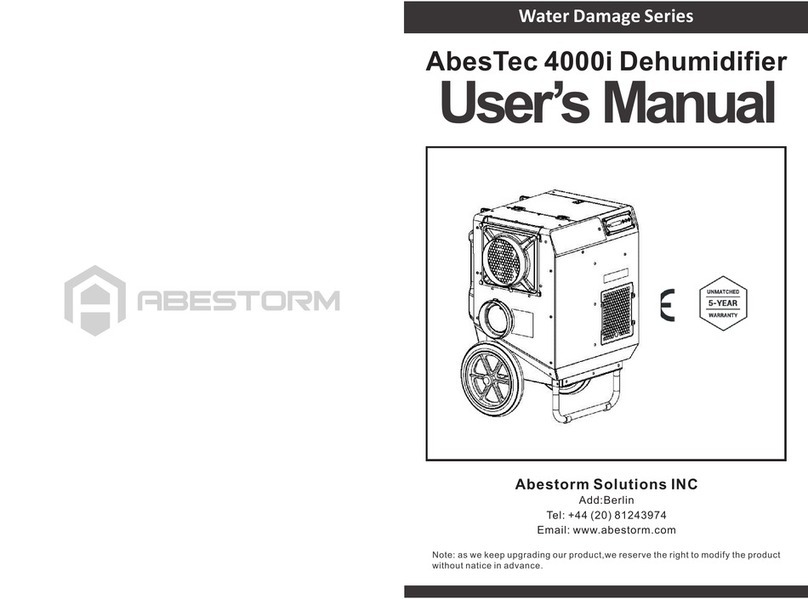
Abestorm
Abestorm Water Damage Series user manual

Exquisit
Exquisit LE 2055 wes instruction manual
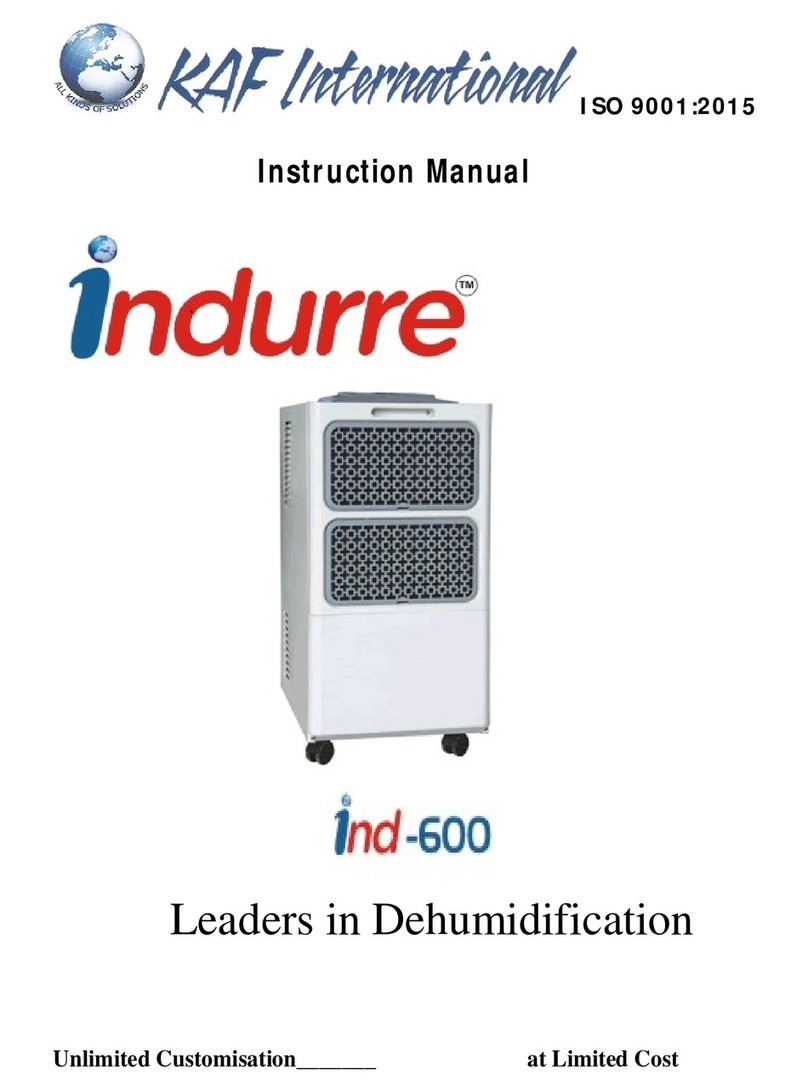
Indurre
Indurre Ind-600 instruction manual
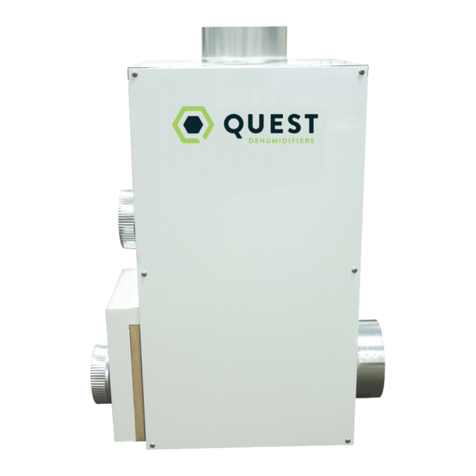
Quest Engineering
Quest Engineering Dry 132D Installation, operation and maintenance instructions
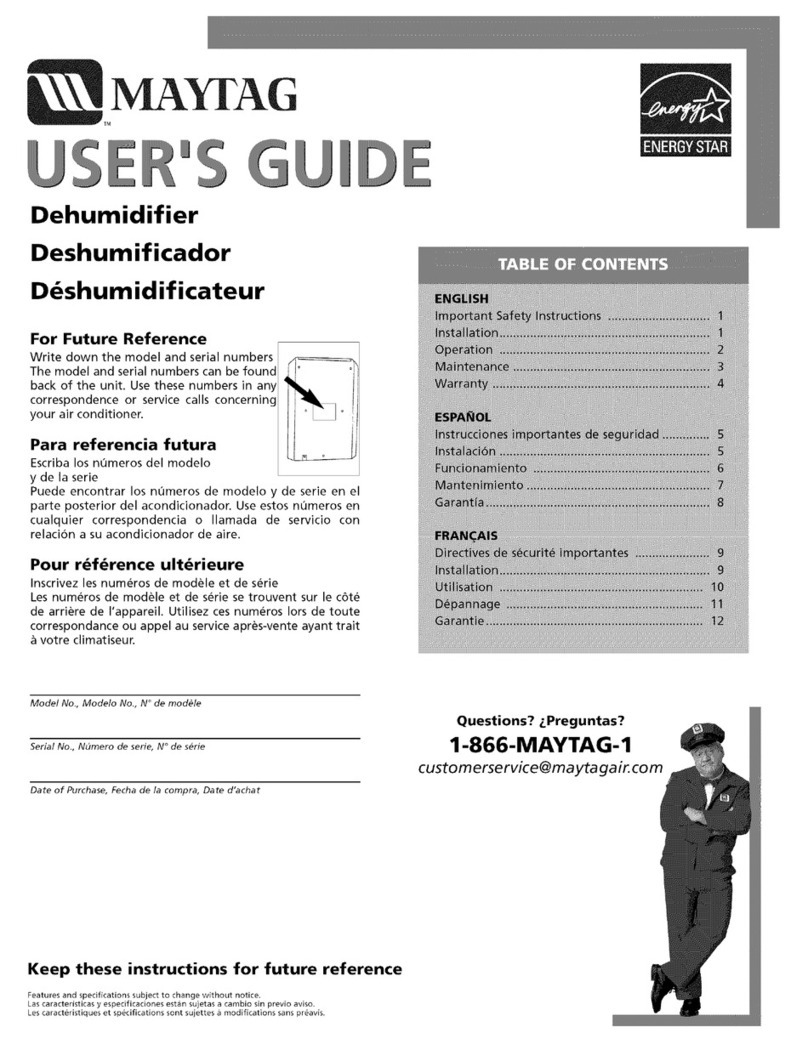
Maytag
Maytag 23-11-2233N-009 user guide
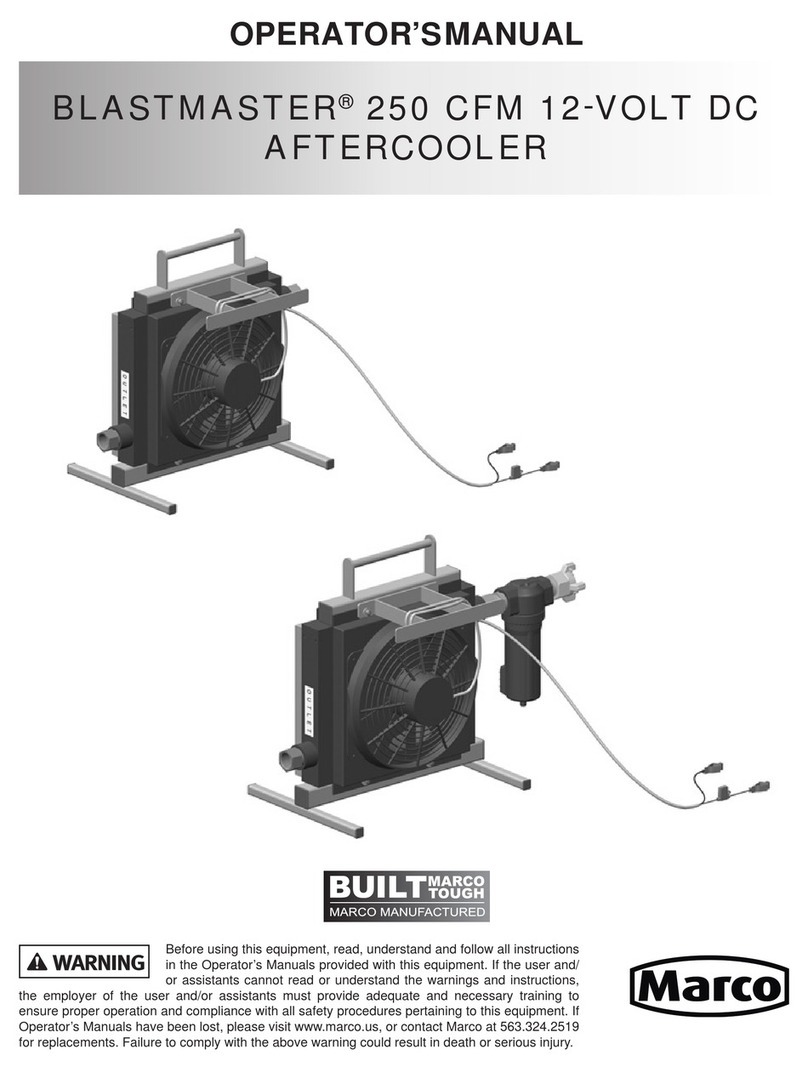
Marco
Marco BLASTMASTER 250 CFM Operator's manual
